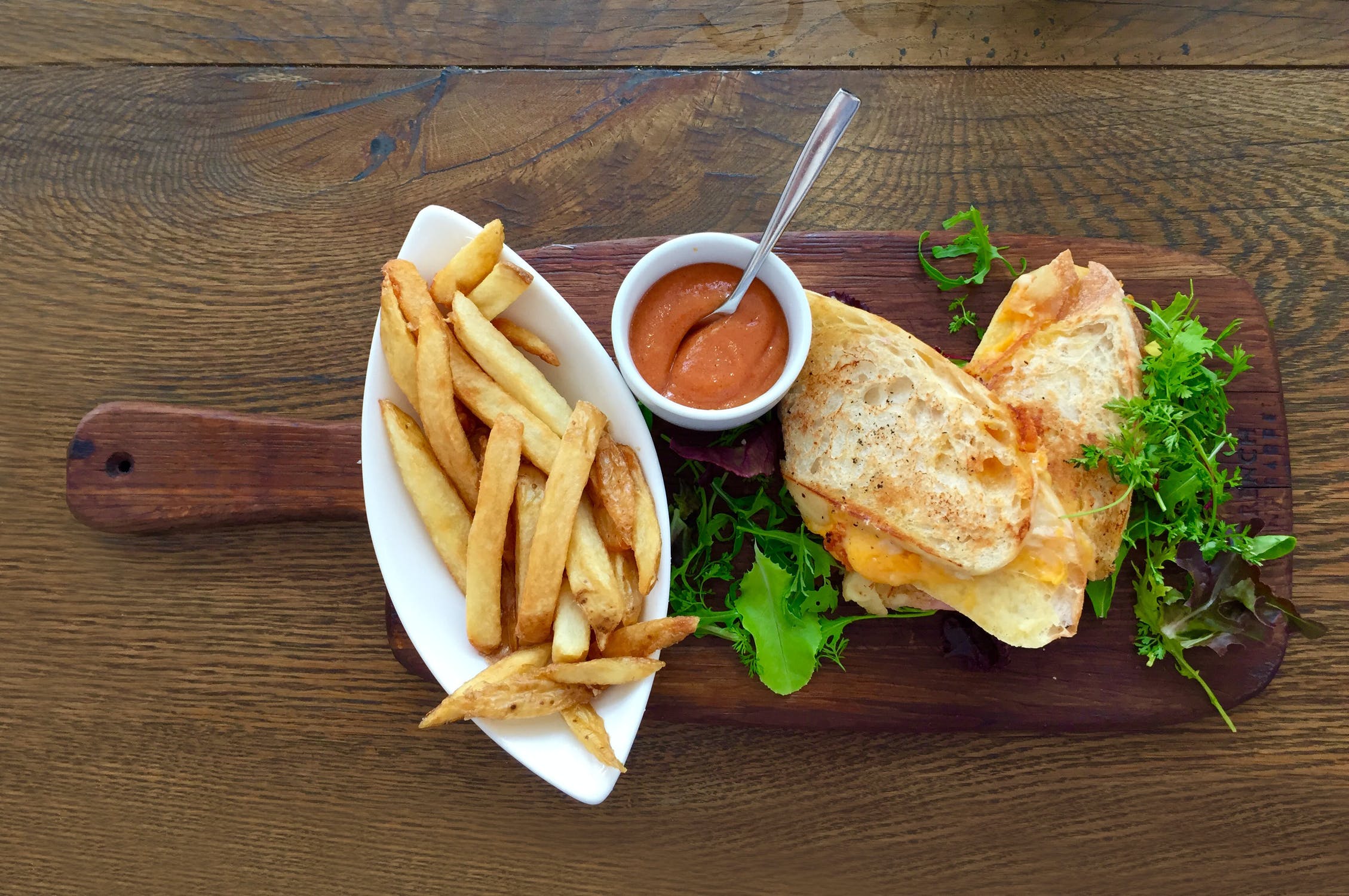Batting Cages with Pitching Machines: What You Need to Know Before You Hit
Introduction
My first experience with a pitching machine nearly ended in disaster – and it wasn’t the machine’s fault! I walked into that batting cage thinking I could handle anything the machine threw at me, literally. Twenty minutes later, I was nursing a bruised ego and a sore shoulder, wondering why nobody had warned me about the learning curve.
Batting cages with pitching machines offer incredible training opportunities, but they’re not as simple as “insert coins and swing away.” There’s a whole world of machine types, safety protocols, and training techniques that can make or break your experience. Let me save you from my rookie mistakes and share everything I’ve learned about getting the most out of these high-tech training tools.
Trust me, once you understand how to use them properly, pitching machines will revolutionize your practice sessions!
Types of Pitching Machines: Understanding Your Options
After using dozens of different machines over the years, I’ve learned that understanding machine types helps you choose the right facility and set appropriate expectations for your practice sessions. Not all pitching machines are created equal, and each type has distinct advantages and limitations.
Wheel Machines vs. Arm Machines: The Fundamental Difference Wheel machines use spinning wheels to propel balls and represent the most common type you’ll encounter at batting cage facilities. I’ve found them incredibly consistent for speed and location, which makes them perfect for developing timing and swing mechanics. The dual-wheel systems can even throw breaking balls by varying wheel speeds.
However, wheel machines don’t replicate the arm motion of human pitchers, which can affect timing development if they’re your only practice method. I learned this when I struggled with live pitching after months of exclusive wheel machine practice. The ball delivery looks completely different from a human pitcher’s release point.
Arm machines attempt to simulate human pitching motion with mechanical arms that throw balls in an overhand motion. These machines help with timing development because the ball delivery more closely resembles live pitching. I prefer arm machines for advanced players who need realistic pitch recognition practice.
The downside is that arm machines are typically less consistent than wheel machines and require more maintenance. They’re also more expensive to operate, so many facilities charge premium rates for arm machine time.
Speed Ranges and Accuracy Differences Most batting cage machines offer speed ranges from 35 mph to 85 mph, though some commercial-grade machines can exceed 95 mph. I’ve learned that accuracy becomes more challenging as speeds increase, regardless of machine type. Budget machines at some facilities struggle to maintain consistent speeds above 70 mph.
Quality machines should hold speed within 2-3 mph of the selected setting. I test this by watching several pitches and listening to the sound they make hitting the backstop. Inconsistent speeds create irregular sounds and impact patterns that indicate machine problems.
Location consistency varies significantly between machine types and quality levels. Premium machines can place balls within a 6-inch target zone consistently, while budget machines might have 18-inch or larger variance. This affects training value significantly, especially for advanced players working on specific situations.
Baseball vs. Softball Compatibility Many modern machines can throw both baseballs and softballs, but some older machines are designed for specific ball types. I always verify compatibility before booking sessions, especially for softball practice. Ball weight differences affect machine settings and accuracy.
Softball machines typically operate at lower speeds but can still provide excellent training value. The larger ball size actually makes timing development more challenging and can improve bat-to-ball contact skills when you return to baseball.
Programmable vs. Manual Machine Options Programmable machines can vary speeds and locations automatically, creating more realistic practice scenarios. I love using these for situational hitting practice – you can program different “at-bats” with varying pitch types and locations.
Manual machines require operator adjustment between pitches but offer more control for specific drill work. I prefer manual machines when working on particular mechanical issues that require repetitive practice at specific speeds and locations.
The choice between programmable and manual often depends on whether you’re practicing alone or with instruction. Solo practice benefits from programmable variety, while coached sessions often work better with manual control.
Safety First: Essential Precautions for Pitching Machine Practice
I learned about pitching machine safety the hard way – through near misses and actual contact that could have been prevented with proper precautions. These machines throw balls with significant force, and treating them casually can lead to serious injuries.
Protective Gear That Goes Beyond Basic Requirements Most facilities provide basic batting helmets, but I’ve learned to bring my own properly fitting helmet that I trust. Rental helmets are often old, poorly maintained, or don’t fit securely. A helmet that shifts during your swing provides inadequate protection.
Eye protection becomes critical with machine practice because of the consistent ball delivery. I use safety glasses or a helmet with face guard when practicing against faster machines. The repetitive nature of machine practice increases exposure risk compared to live pitching.
Proper footwear prevents slipping during aggressive swings. I avoid rental shoes whenever possible and wear my own cleats or turf shoes with good traction. Slipping during a swing can cause injury and affects swing mechanics negatively.
Shin guards aren’t required but provide valuable protection against foul balls and errant pitches. I’ve been hit several times by balls that bounced unpredictably, and shin protection prevents painful injuries that can end practice sessions.
Machine Setup and Inspection Protocol I always inspect machine setup before starting practice sessions, even at professional facilities. Look for loose bolts, damaged throwing mechanisms, and proper ball feed alignment. Problems are much easier to address before you start hitting than after you’re injured.
Ball quality affects both safety and machine performance. Damaged or waterlogged balls can behave unpredictably and damage machine mechanisms. I request fresh balls if the provided ones show excessive wear or damage.
Machine positioning relative to the batter’s box affects both safety and training value. The machine should be positioned to deliver strikes consistently, not force you to adjust your stance to accommodate poor setup.
Common Injury Risks and Prevention Hit-by-pitch injuries represent the most serious risk with pitching machines. Unlike human pitchers, machines don’t have judgment about when to stop throwing. I always position myself correctly before activating the machine and never reach for balls while the machine is running.
Fatigue-related injuries increase as practice sessions extend. Machine practice is more intensive than live pitching because there are no breaks between pitches. I limit sessions to 30-40 minutes maximum and take breaks when my timing starts to deteriorate.
Overuse injuries can develop from repetitive machine practice without variation. The consistent delivery can create repetitive stress on joints and muscles. I vary my practice routine and include different machine speeds and locations to prevent overuse problems.
Emergency Procedures Every User Should Know Every pitching machine should have clearly marked emergency stops that immediately cease operation. I locate these controls before starting any session and ensure other users know their location as well.
Machine malfunctions can occur without warning, creating dangerous situations. I know how to quickly exit the batting area and shut down power to machines when problems develop. Never attempt to “fix” machine problems yourself – seek facility staff assistance immediately.
First aid availability should be verified at every facility. Serious injuries require immediate medical attention, and knowing where to find help can be critical in emergency situations.
Maximizing Your Training Sessions: Advanced Techniques and Drills
After hundreds of hours of machine practice, I’ve developed systematic approaches that maximize training value and accelerate skill development. Random swinging at machine pitches wastes time and can actually hurt your development if done incorrectly.
Progressive Speed Training Methods I always start machine sessions 10-15 mph below my target speed to warm up properly and establish timing. Jumping directly to full speed often leads to poor contact and frustration that affects the entire session.
Speed progression should be gradual and systematic. I increase speeds in 5 mph increments and take at least 10-15 swings at each level before advancing. This allows your timing to adjust naturally rather than forcing it.
Confidence building at each speed level prevents the rushing that destroys swing mechanics. I stay at each speed until I’m making consistent contact before moving up. This methodical approach produces better long-term results than aggressive speed jumping.
Timing Adjustment Strategies Machine timing differs from live pitching because there’s no wind-up or delivery variation. I’ve learned to focus on the ball release point rather than trying to time the machine’s mechanical action. This translates better to live pitching situations.
Rhythm development requires conscious effort with machine practice. I count out timing patterns and focus on maintaining consistent swing rhythm despite the mechanical delivery. This prevents the robotic swing timing that can develop with excessive machine practice.
Mental preparation for each pitch helps maintain focus during repetitive machine work. I visualize game situations and practice situational hitting rather than just taking random swings.
Situational Hitting Drills You Can Practice Two-strike hitting drills work perfectly with machine consistency. I practice protective swings, contact hitting, and foul-off techniques using machine speeds that replicate game pressure situations.
Situational location work helps develop plate coverage and swing adjustments. I request specific pitch locations from operators or use programmable machines to work on inside, outside, high, and low pitch recognition and adjustment.
Count-specific practice scenarios can be programmed into advanced machines or simulated with manual machines. Working 2-0, 3-1, and other specific counts helps develop game-appropriate approaches.
Session Length and Intensity Management Optimal session length depends on your experience level and physical condition. I’ve found that 20-30 minutes provides maximum benefit for most players without causing fatigue that degrades performance.
Intensity variation within sessions prevents monotony and maintains focus. I alternate between aggressive swings, contact drills, and technique work to keep sessions engaging and productive.
Cool-down periods are just as important as warm-up phases. I finish sessions with slower speeds and easier contact work to end on positive notes and prevent muscle fatigue from affecting my swing memory.
Machine Settings and Customization: Getting the Perfect Pitch
Understanding how to optimize machine settings transforms mediocre practice sessions into highly effective training opportunities. I’ve learned that most players never explore the full capabilities of modern pitching machines, missing out on valuable training options.
Speed Selection Guidelines by Age and Skill Youth players (ages 8-12) should start with speeds between 35-45 mph and progress gradually based on contact quality rather than age alone. I’ve seen too many young players get overwhelmed by speeds that are too aggressive for their development level.
High school players typically handle 50-70 mph effectively, but individual variation is significant. I evaluate each player’s contact quality and confidence level rather than assuming they can handle “age-appropriate” speeds.
Adult recreational players often overestimate their speed tolerance. I recommend starting at 55-60 mph regardless of previous experience and building up systematically. Ego-driven speed selection leads to poor contact and wasted practice time.
Advanced and college-level players can benefit from speeds up to 85-90 mph, but even elite players should spend time at moderate speeds working on mechanics and timing fundamentals.
Strike Zone Adjustment Techniques Proper strike zone setup is crucial for productive practice sessions. I work with facility staff to position machines for my specific height and stance, rather than accepting generic settings that don’t match my swing plane.
Height adjustments should place the majority of pitches in your personal strike zone based on your stance and swing preferences. I prefer setups that deliver 70% strikes with 30% borderline pitches to simulate game conditions.
Horizontal location settings can target specific areas for focused practice. I spend time working inside, outside, and middle locations separately before combining them into random sequences.
Pitch Type Variations on Advanced Machines Modern machines can simulate fastballs, curveballs, sliders, and changeups through wheel speed and angle variations. I use these features to practice pitch recognition and adjustment skills that translate directly to game situations.
Breaking ball practice requires different timing and swing adjustments. I spend dedicated time working on curveball and slider recognition, using machine consistency to develop proper swing paths for different pitch types.
Changeup simulation helps develop patience and timing control. I practice maintaining swing rhythm while adjusting to speed variations that simulate off-speed pitches.
Troubleshooting Common Machine Inconsistencies Ball feed problems cause irregular delivery timing and should be addressed immediately. I watch for balls sticking in feed mechanisms or irregular spacing between pitches that affects timing development.
Speed inconsistencies often indicate maintenance needs or ball quality problems. I monitor speed variations and report significant inconsistencies to facility staff rather than trying to adapt to inconsistent machines.
Location drift during sessions usually indicates mechanical problems or improper setup. I track pitch locations and request adjustments when machines start missing their intended zones consistently.
Maintenance Signs That Require Professional Service Unusual noises during operation often indicate mechanical problems that could lead to safety issues or poor performance. I report grinding, squealing, or irregular mechanical sounds to facility staff immediately.
Visible wear on throwing mechanisms suggests maintenance needs that affect both safety and performance. I avoid machines with obviously worn components and recommend professional inspection.
Electrical issues like irregular operation or inconsistent speeds require immediate professional attention. I never attempt to address electrical problems myself and insist on professional service before using affected machines.
Comparing Facilities: What to Look for in Pitching Machine Cages
After visiting dozens of facilities with pitching machines, I’ve learned to evaluate quality indicators that separate professional operations from mediocre facilities. These factors significantly affect both training value and safety during your practice sessions.
Machine Quality Indicators Professional-grade machines have consistent, smooth operation with minimal vibration or noise during normal operation. I listen for smooth motor operation and watch for consistent ball delivery patterns that indicate proper maintenance.
Machine age affects both performance and safety. I prefer facilities that invest in newer equipment and maintain upgrade schedules rather than running machines until they fail. Newer machines typically offer better safety features and more consistent performance.
Maintenance records should be available for inspection if requested. Quality facilities keep detailed maintenance logs and can provide service history for their equipment. This transparency indicates professional operation standards.
Staff Expertise and Instruction Availability Knowledgeable staff can significantly enhance your machine practice experience. I look for staff who understand machine capabilities, can recommend appropriate settings, and offer technique suggestions based on observation.
Instruction availability varies widely between facilities. Some offer professional instruction specifically designed for machine practice, while others provide only basic operation assistance. I prefer facilities with comprehensive instruction programs.
Safety training should be provided to all users, regardless of experience level. Quality facilities require safety briefings and ensure users understand proper procedures before allowing machine access.
Facility Maintenance Standards Overall facility cleanliness usually correlates with equipment maintenance quality. I prefer facilities that maintain high cleanliness standards throughout their operations, not just in customer areas.
Equipment storage and organization reflect operational priorities. Quality facilities store equipment properly and maintain organized operations that indicate attention to detail and professional management.
Safety equipment availability and condition indicate facility priorities. I look for facilities that provide quality protective gear and maintain it properly rather than offering worn-out or inadequate safety equipment.
Pricing Structures and Value Comparison Transparent pricing without hidden fees indicates honest business practices. I prefer facilities that include all necessary equipment and services in their quoted prices rather than adding fees for basic necessities.
Time-based pricing should reflect actual machine access time rather than total facility time. Some facilities charge for warm-up and setup time, while others provide pure machine access time. Understanding pricing structures prevents surprises.
Package deals and membership options can provide significant value for regular users. I evaluate long-term costs for frequent users and compare package pricing with pay-per-use rates to determine optimal value.
Additional Training Resources Video analysis capabilities can enhance machine practice effectiveness significantly. Some facilities offer camera systems that record swings for immediate review and analysis during machine sessions.
Technology integration like swing analysis software adds value for serious players. I look for facilities that invest in training technology rather than just basic machine operations.
Complementary training equipment like tees, soft-toss nets, and instruction aids indicate comprehensive training focus. Facilities that support multiple training methods typically provide better overall development opportunities.
Building Skills Progressively: From Beginner to Advanced Practice
Machine practice effectiveness depends heavily on systematic skill development rather than random swinging. I’ve developed progressive training methods that maximize improvement and prevent the bad habits that can develop from improper machine use.
Starting Protocols for Machine Newcomers First-time machine users should begin with significantly slower speeds than they think they can handle. I start beginners at 40-45 mph regardless of their live pitching experience because machine timing is different and requires specific adjustment.
Basic stance and setup become critical with machine practice because inconsistent positioning leads to erratic contact patterns. I spend time establishing consistent setup routines before focusing on swing mechanics.
Contact quality should be the primary focus for beginners rather than power or distance. I emphasize making solid contact consistently before worrying about driving balls hard or pulling them for distance.
Skill Development Milestones Consistent contact at slow speeds represents the first major milestone. I define this as 7-8 quality contacts out of 10 swings at 45-50 mph. Rushing past this stage leads to timing problems at higher speeds.
Speed progression milestones should be based on contact quality maintenance rather than arbitrary time periods. I increase speeds only when contact quality remains consistent at the current level.
Situational hitting development represents advanced skill levels. Working specific locations, counts, and pitch types indicates readiness for game-situation practice and advanced training methods.
Advanced Drills for Experienced Players Multi-speed sessions challenge advanced players by varying speeds within single practice sessions. I program machines to alternate between fastball and changeup speeds to develop timing flexibility.
Location-specific training helps advanced players develop plate coverage and swing adjustments. I work systematic patterns through different strike zone areas to develop comprehensive hitting approaches.
Pressure simulation drills recreate game-pressure situations using machine consistency. I practice specific count situations and clutch hitting scenarios that translate directly to game performance.
Team Training Applications Group machine practice requires careful planning and rotation systems to maximize training time for all participants. I develop rotation schedules that provide adequate individual practice while maintaining group engagement.
Competitive drills using machine consistency create healthy competition and motivation within team practice sessions. I design challenges and competitions that emphasize proper technique while maintaining fun and engagement.
Progress tracking systems help monitor individual development within team settings. I maintain records of speed progression, contact quality, and skill development milestones for each team member.
Integration with Other Training Methods Machine practice should complement rather than replace other training methods. I balance machine work with live pitching, tee work, and situational practice to develop comprehensive hitting skills.
Live pitching transition requires specific attention to timing and recognition differences. I gradually increase live pitching exposure while maintaining machine practice to ensure smooth transitions between practice methods.
Game application of machine-developed skills requires conscious effort and practice. I work on transferring machine timing and mechanics to game situations through specific drills and mental preparation techniques.
Conclusion
Pitching machines have revolutionized batting practice, but only if you approach them with the right knowledge and respect. The consistent delivery and adjustable settings make them invaluable training tools, but they’re not magic bullets that automatically improve your swing. Success comes from understanding the machine’s capabilities, prioritizing safety above all else, and building your skills systematically over time.
Don’t make my mistake of jumping in too aggressively – start conservative and work your way up. Find a facility with quality machines and knowledgeable staff who can guide your development. Most importantly, remember that machine practice should complement, not replace, live pitching experience.
Use these tools wisely, and they’ll become an essential part of your training arsenal! The key is treating them as sophisticated training instruments rather than simple ball-throwing devices, and always keeping safety and systematic skill development as your top priorities.






